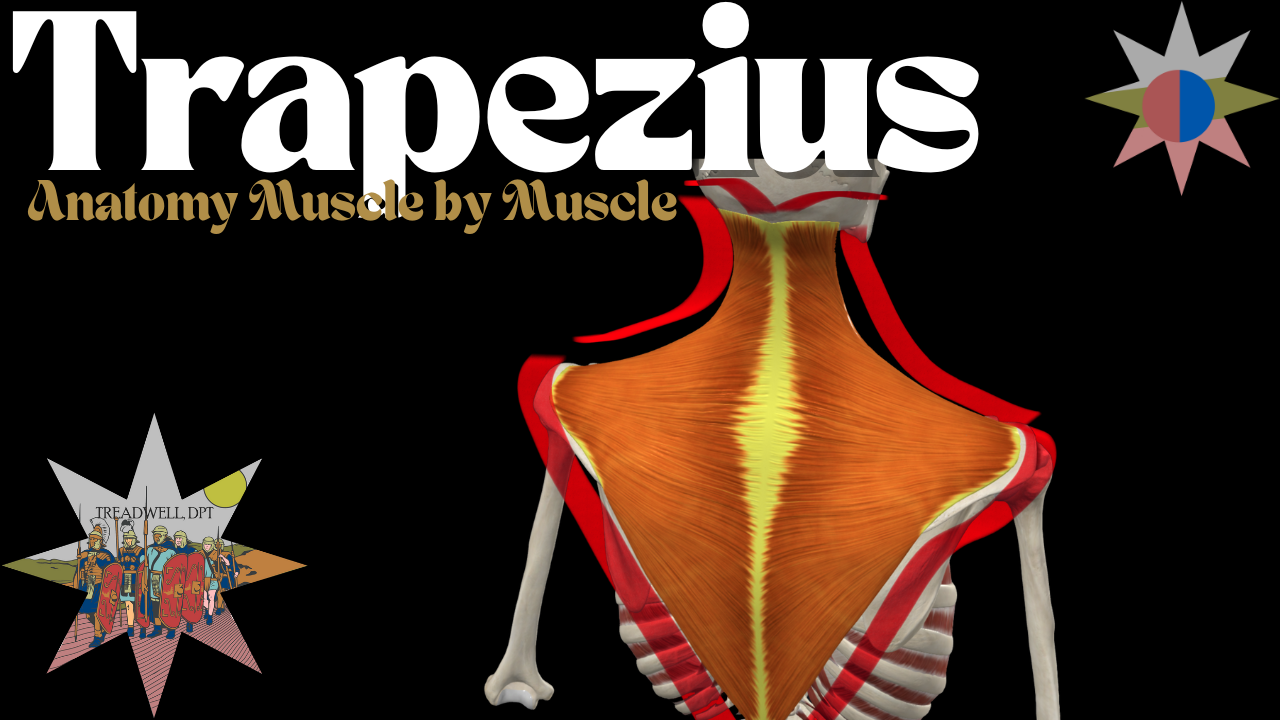Trapezius Muscle – Anatomy Breakdown Video & Clinical Guide
The trapezius is one of the most recognizable—and clinically important—muscles in the upper body. In this in-depth video breakdown, we’ll cover its origin, insertion, function, innervation, and clinical relevance. Perfect for students, clinicians, trainers, or anyone looking to deepen their understanding of shoulder and neck anatomy.
Watch the full video below and read on for practical clinical insights.
Quick Hits
The trapezius muscle is a large, superficial muscle that spans the neck, shoulders, and upper back. It’s typically divided into upper, middle, and lower fibers, each with distinct functions.
Origin: External occipital protuberance, nuchal ligament, and spinous processes of C7–T12.
Insertion: Lateral third of the clavicle, acromion, and spine of the scapula.
Innervation: Spinal accessory nerve (cranial nerve XI), with contributions from cervical nerves C3 and C4 for proprioception.
Actions:
Upper fibers: Elevate scapula, upward rotation
Middle fibers: Retract scapula
Lower fibers: Depress scapula, assist upward rotation
The trapezius is essential for coordinated shoulder movement, proper posture, and overhead activity. Its dysfunction can contribute to neck pain, scapular dyskinesis, and shoulder impingement.
Clinical Relevance
Clinically, the trapezius is a frequent site of pain, tension, and trigger points—especially in people with poor posture or stress-related muscle guarding. Weakness or poor motor control in its lower fibers can lead to a mild scapular winging-type presentation or excessive elevation during arm elevation, contributing to shoulder impingement syndromes.
Rehab should focus on balanced activation of all fibers, postural correction, and integrating movements that promote upward rotation of the scapula. Common exercises include I’s, T’s, and Y’s , scapular retractions, and rows.
What’s Next
𖤓Want help with shoulder or neck pain?
I offer virtual consultations and personalized treatment plans for musculoskeletal issues!
𖤓In the Minneapolis area looking for treatment?
Book an appointment here!
𖤓Enjoyed the video?
There’s more where that came from! Check out my YouTube channel here!

